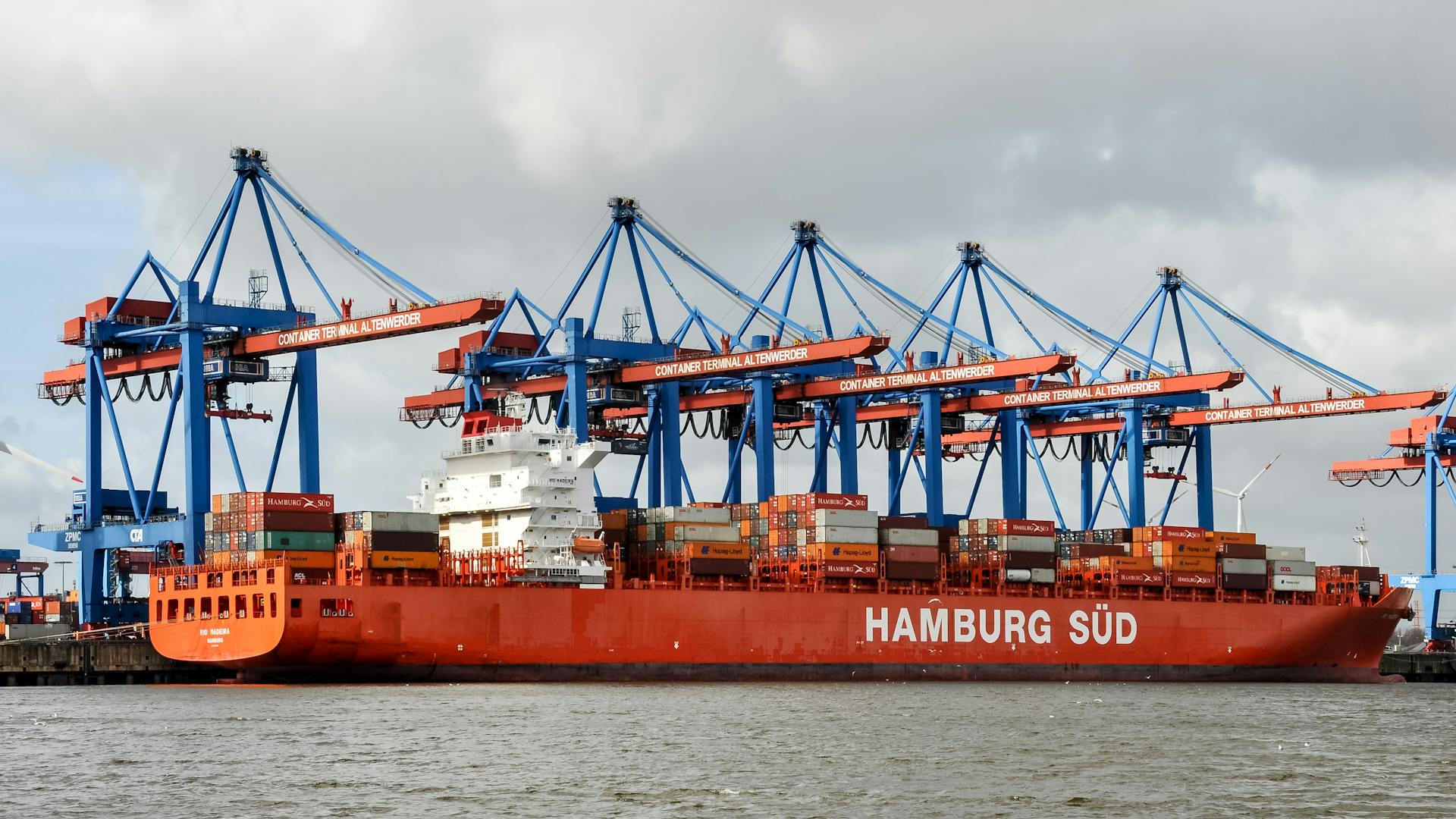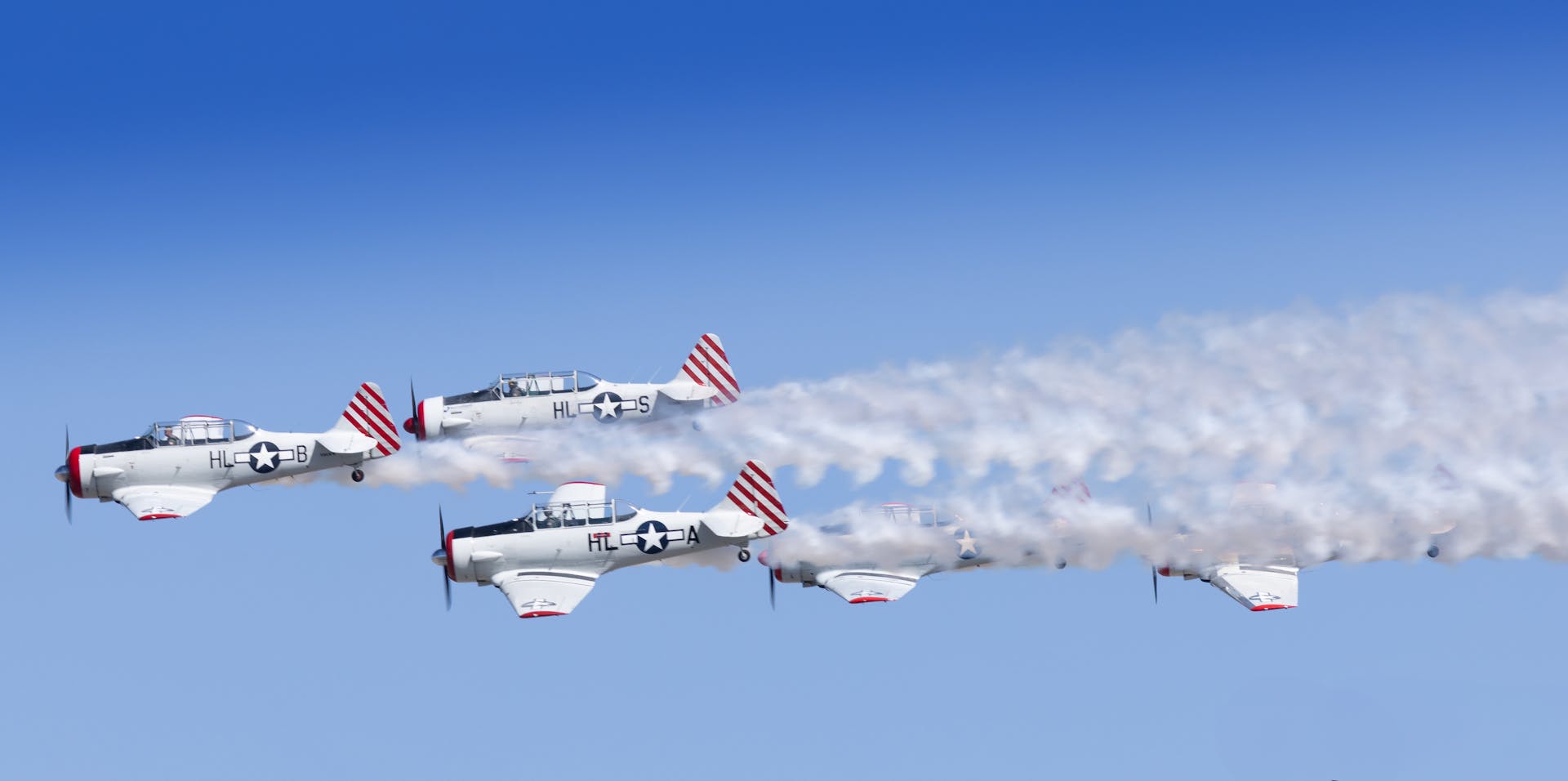
The Allied airlift effort played a crucial role in World War 2, with cargo planes transporting troops, supplies, and equipment across vast distances.
The C-47 Skytrain, a workhorse of the US Army Air Forces, was one of the most widely used cargo planes, with over 13,000 aircraft produced during the war.
These planes were tasked with delivering everything from ammunition and food to medical supplies and even tanks, often in treacherous conditions.
The C-47's impressive payload capacity of up to 8,000 pounds allowed it to transport large quantities of cargo, making it a vital asset in the war effort.
Consider reading: Military Cargo Planes C 17
Theaters of Operation
The Pacific Theater was a challenging environment for cargo planes, with unpredictable weather, heavy cargo loads, and high mountain terrain. The C-46 was a workhorse in this theater, able to carry more cargo higher than other Allied twin-engine transport aircraft.
The C-46 was nicknamed the "flying coffin" by ATC pilots, due to its high accident rate. At least 31 known instances of fires or explosions in flight occurred between May 1943 and March 1945.
The C-46 played a significant role in the Pacific island campaign, particularly for the U.S. Marines, who used the aircraft to fly supplies in and wounded personnel out of island landing strips.
Additional reading: Military Cargo Planes C 130
Asian Pacific Theater

The Asian Pacific Theater was a pivotal region in World War II, with the US Army Air Forces (USAAF) playing a crucial role in supplying troops and equipment to China and other Allied forces. The Commando, a workhorse of the USAAF, flew over the treacherous "Hump" in the Himalayas, transporting desperately needed supplies to troops in China from bases in India.
The C-46, a twin-engine transport aircraft, was the primary plane used for this operation, capable of carrying heavy loads and navigating unpredictable weather conditions. Its powerful engines enabled it to climb satisfactorily with heavy loads, staying aloft on one engine if not overloaded.
The Aleutian Islands Campaign saw the Japanese occupy Kiska and Attu, prompting the US Army Air Transport Command (ATC) to send planes to Edmonton, Canada, to transport troops and equipment to Dutch Harbor. This campaign lasted from June 1942 to August 1943, with ATC providing vital supplies to American and Canadian forces.
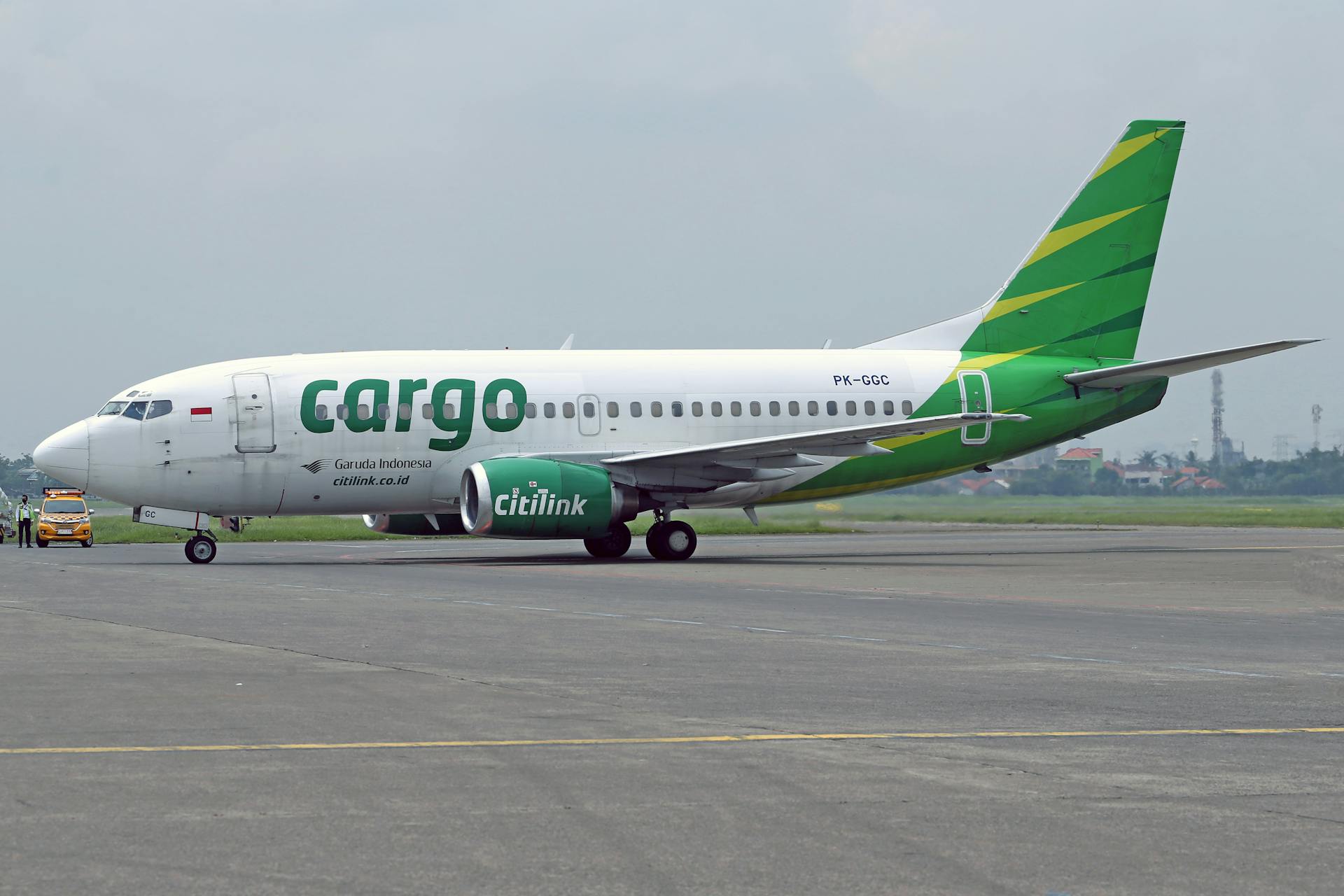
The India-China airlift was a perilous operation that involved flying supplies over the Himalayas, with no radio navigation aids and unreliable maps. The C-46 was the primary aircraft used for this operation, and it proved to be a reliable workhorse despite its reputation as the "flying coffin" due to its high accident rate.
The India-China airlift resulted in the delivery of 650,000 tons of materiel over 42 months, with 34,000 military personnel and 640 aircraft involved. The operation was so challenging that ATC was awarded a Presidential Unit Citation in 1944.
Explore further: Air India Cargo
Europe
The C-46 Skytrain played a significant role in wartime operations, particularly in the European theater, where it was deployed in March 1945.
In Operation Varsity, the C-46 was used to drop paratroopers in an offensive to cross the Rhine River in Germany, but it suffered heavy losses due to anti-aircraft fire.
The C-46's losses were not unique, as other aircraft types also suffered intense damage during the same operation, including 13 gliders shot down and 126 badly damaged.

The harsh winter weather over the North Atlantic posed a significant challenge to air transport operations between the United States and Great Britain or North Africa.
By March 1944, most transport flying went by way of the Azores, which became operational in late 1943, allowing eastbound flights to resume.
The Azores provided a crucial lifeline for the movement of personnel, mail, and critical cargoes to the European and Mediterranean theaters.
In January 1944, the monthly lift increased to 1,178 tons, and by July, it had risen to 1,900 tons and 2,570 passengers.
Seventy percent of this cargo went to Great Britain, while 30% went to North Africa.
The air transport command also provided emergency airlift to the Eighth Air Force, delivering essential equipment such as incendiary-bomb fuzes and jettisonable fuel tanks for fighter planes.
In the last five months of the war in Europe, over 10,000 tons of air cargo were carried overseas by the air transport command, demonstrating its safe and dependable airlift service.
North African & Middle East Campaign

The North African & Middle East Campaign was a pivotal theater of operation during World War II. The battle lasted from 10 June 1940 until the German surrender on 13 May 1943.
Air transport played a crucial role in this campaign, with a lend-lease supply line established to British forces fighting in the Near East. This route, which ran from Florida to Natal, Brazil, then across the South Atlantic to Africa and the Middle East, was the oldest and most important air route under ATC jurisdiction.
The U.S. entry into the war on 7 December 1941 saw ATC participating in the North African Campaign, specifically Operation Torch, by bringing supplies to U.S. forces. Transport aircraft often stopped at Ascension Island in the South Atlantic on the flight from Natal, Brazil.
The North African Campaign was fought across the Mediterranean coast and Cairo, Egypt, with ATC supporting the Fifteenth, Twelfth, and Ninth Air Forces operating from these locations.
If this caught your attention, see: Irish Mercantile Marine during World War II
Campaigns and Operations
The Allies relied heavily on cargo planes to transport troops, equipment, and supplies during World War 2.
The C-47 Skytrain, a popular cargo plane, was used by the US Army Air Forces to transport troops and equipment in the D-Day invasion of Normandy.
The Allies used cargo planes to supply the Soviet Union through the Lend-Lease Act, which provided the Soviet Union with vital supplies and equipment.
Cargo planes played a crucial role in the Berlin Airlift, where they transported food and supplies to the city from 1948-1949.
A different take: Used Cargo Planes
Aleutian Islands Campaign (1942-1943)
The Aleutian Islands Campaign was a crucial operation during World War II. It took place from June 1942 to August 1943.
The Japanese occupied the Aleutian Islands, Alaska, in June 1942, and the US responded by sending planes to Edmonton, Canada, to supply troops and equipment.
The Aleutian Islands Campaign was a long and challenging operation, with the Japanese occupation of Kiska and Attu lasting for over a year.
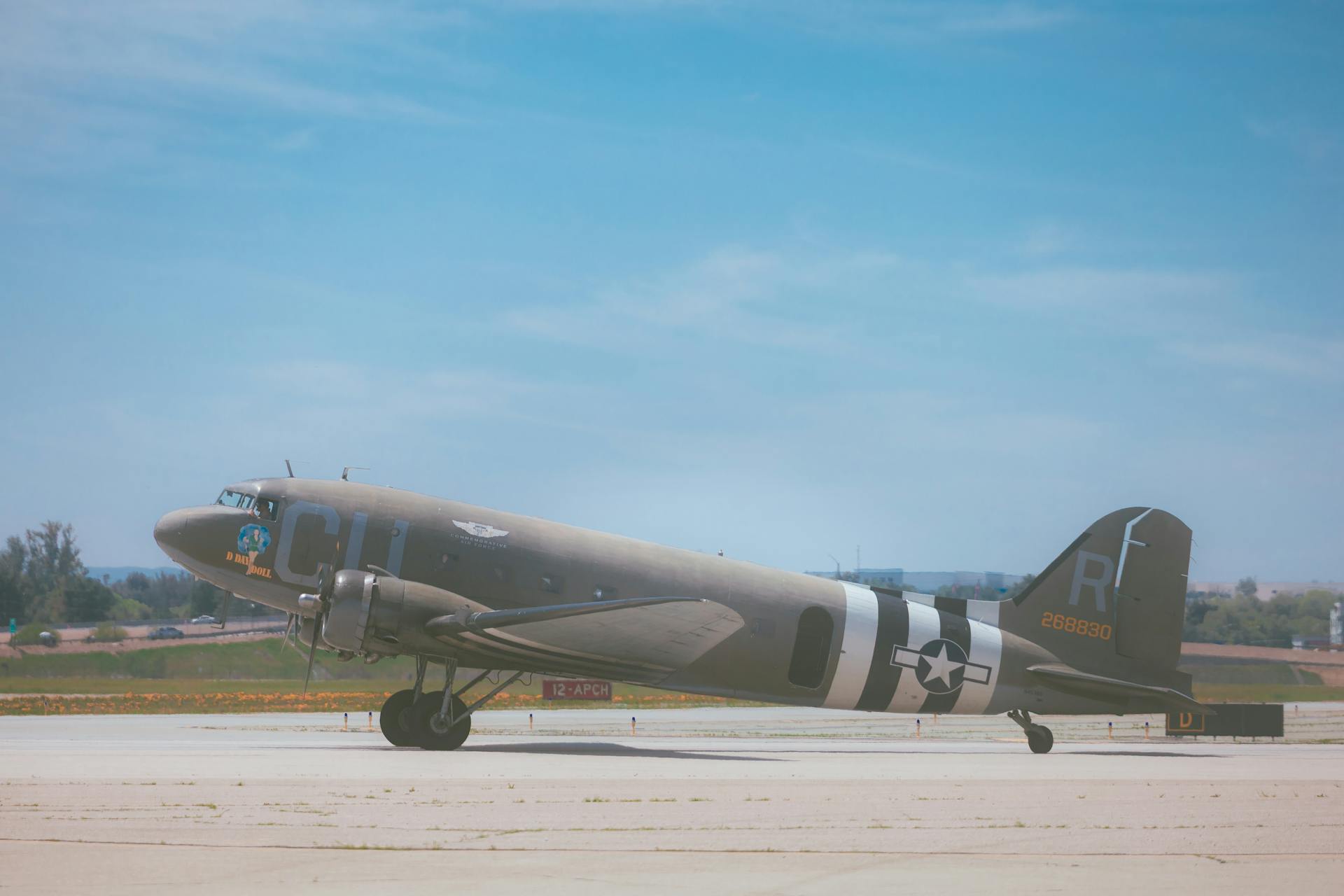
The US Air Transport Command played a vital role in supplying American and Canadian forces during the campaign, making daily round trips to Dutch Harbor with troops, ammunition, medical supplies, food, and other essential equipment.
A complete hospital was even flown in to replace the one that had been partially demolished by Japanese bombing.
The Japanese forces withdrew from the Aleutian Islands on August 15, 1943, marking the end of the campaign.
European Campaign
The European Campaign was a crucial part of the war effort, and the Allies' ability to transport troops, supplies, and equipment across the Atlantic was a game-changer.
Until Lagens Field in the Azores was opened in late 1943, eastbound operations over the North Atlantic ceased due to harsh winter weather.
The Azores became a vital stopover, allowing eastbound flights to resume, and by March 1944, most transport flying between the US and Great Britain or North Africa went through the Azores.

Flights to Prestwick, Scotland, continued to be flown via Labrador and Iceland when possible.
Through the winter of 1943-44, ATC provided a significant eastward lift for key personnel, mail, and critical cargoes to the European and Mediterranean theaters.
From January 1944, the monthly lift increased dramatically, with 1,178 tons carried in June and 1,900 tons by July.
Seventy percent of this cargo went to Great Britain, while 30% went to North Africa.
ATC played a vital role in delivering emergency supplies, including incendiary-bomb fuzes, jettisonable fuel tanks, and other equipment to the Eighth Air Force.
In addition to cargo, ATC carried 3,570 pounds of whole blood daily to Paris, saving countless lives.
Thousands of battle casualties were also returned to the US for medical care.
Design and Specifications
The C-46A cargo plane was an impressive machine, with a crew of 4 or 5 and a maximum speed of 270 mph at 15,000 ft. Its length of 76 ft 4 in made it a bit of a beast to maneuver on the ground.
Here are some key specifications of the C-46A:
Its range of 3,150 mi at 173 mph made it a reliable choice for long-distance cargo transport.
Transport Carrier
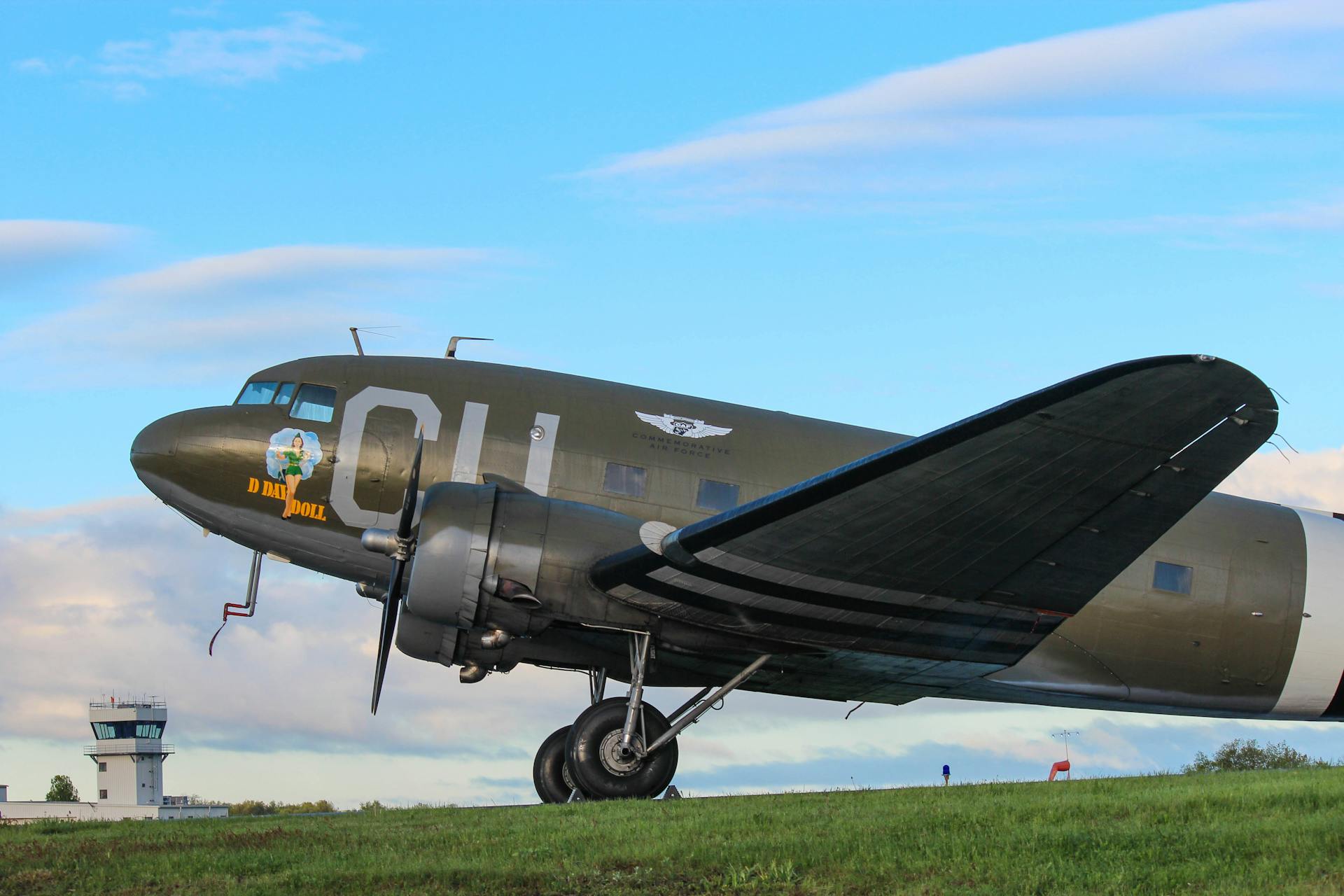
The C-46 was a complex aircraft that required a lot of maintenance. It had 721 required changes in production models by November 1943.
The plane was notorious for being a "plumber's nightmare" due to its numerous issues. This nickname was well-deserved, as maintenance crews around the world struggled to keep the plane flying.
The C-46 was involved in 31 unexplained airborne explosions between May 1943 and May 1945. These explosions were initially attributed to various causes, including the fuel system.
The fuel system was criticized for being quickly designed and then modified for the new Pratt & Whitney engines. This led to small leaks in the tanks and fuel system.
Pooled gasoline from these leaks, combined with a spark, was the likely cause of the explosions. This was often triggered by open-contact electrical components.
The C-46's wings were unvented, allowing gasoline to pool at the wing root if a leak occurred. This made the plane even more prone to explosions.
The solution to this problem was to install a wing vent modification to vent pooled gasoline. An explosion-proof fuel booster pump was also installed, along with shielded electrical selector switches.
Specifications (C-46A)
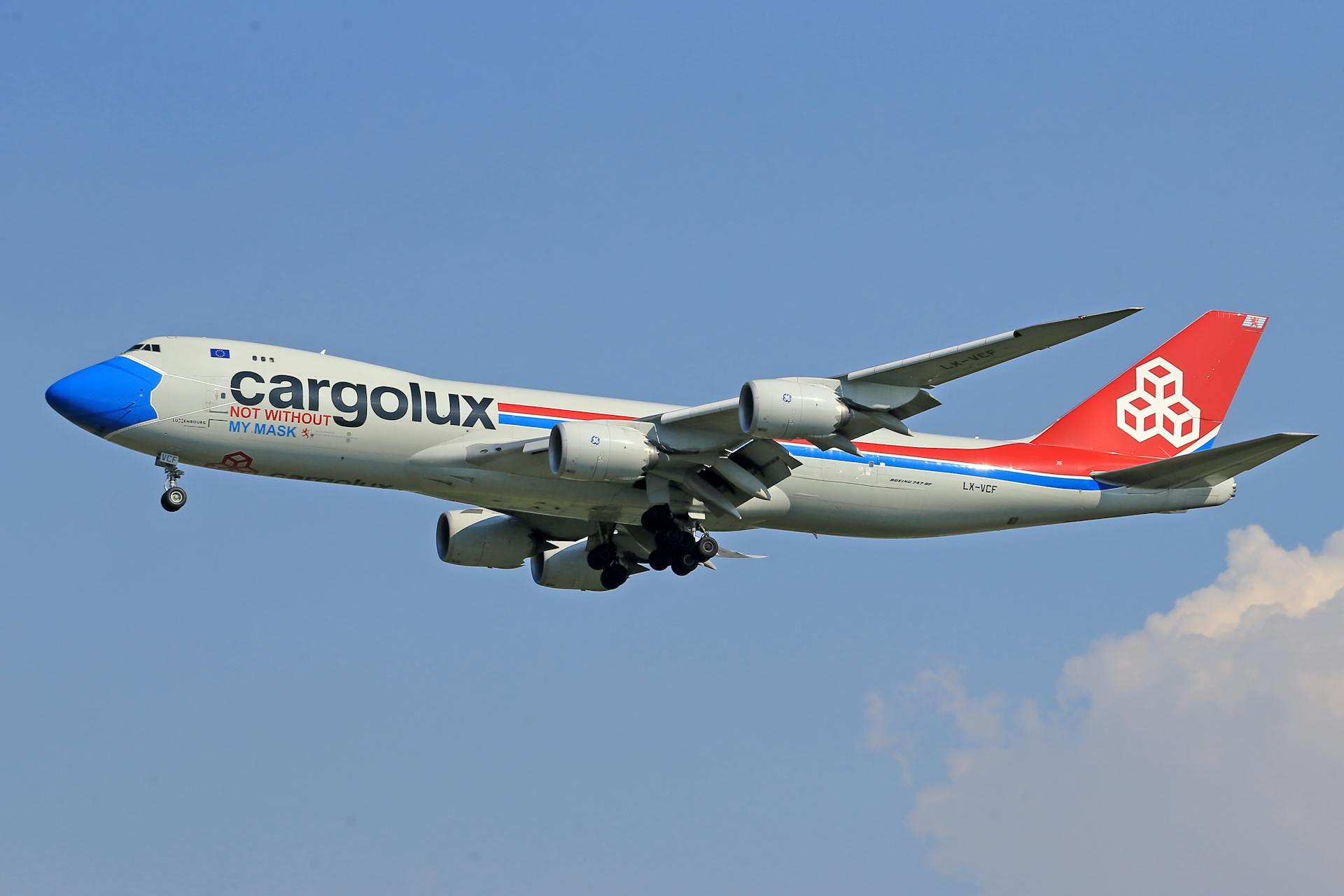
The C-46A is a remarkable aircraft with impressive specifications. It has a crew of 4 or 5 and a capacity that's not specified, but we do know it's a significant one.
The C-46A measures 76 ft 4 in in length, 108 ft 0 in in wingspan, and 21 ft 9 in in height. These dimensions give it a substantial presence on the runway.
The aircraft's wings are designed with a root airfoil of NACA 23017 and a tip airfoil of NACA 4410.5. This unique design allows for efficient airflow and stability.
The C-46A has a gross weight of 45,000 lb, which is a significant amount of weight for an aircraft of its size. The empty weight is 30,669 lb, leaving plenty of room for cargo and passengers.
Powering the C-46A are two Pratt & Whitney R-2800-51 Double Wasp 18-cylinder air-cooled radial piston engines, each producing 2,000 hp. This impressive power output allows the aircraft to reach incredible speeds.
Here are the C-46A's key performance specifications:
- Maximum speed: 270 mph at 15,000 ft
- Cruise speed: 173 mph
- Range: 3,150 mi at 173 mph or 1,000 mi at 237 mph
- Service ceiling: 24,500 ft
- Time to altitude: 10,000 ft in 17 minutes 24 seconds
Post-War
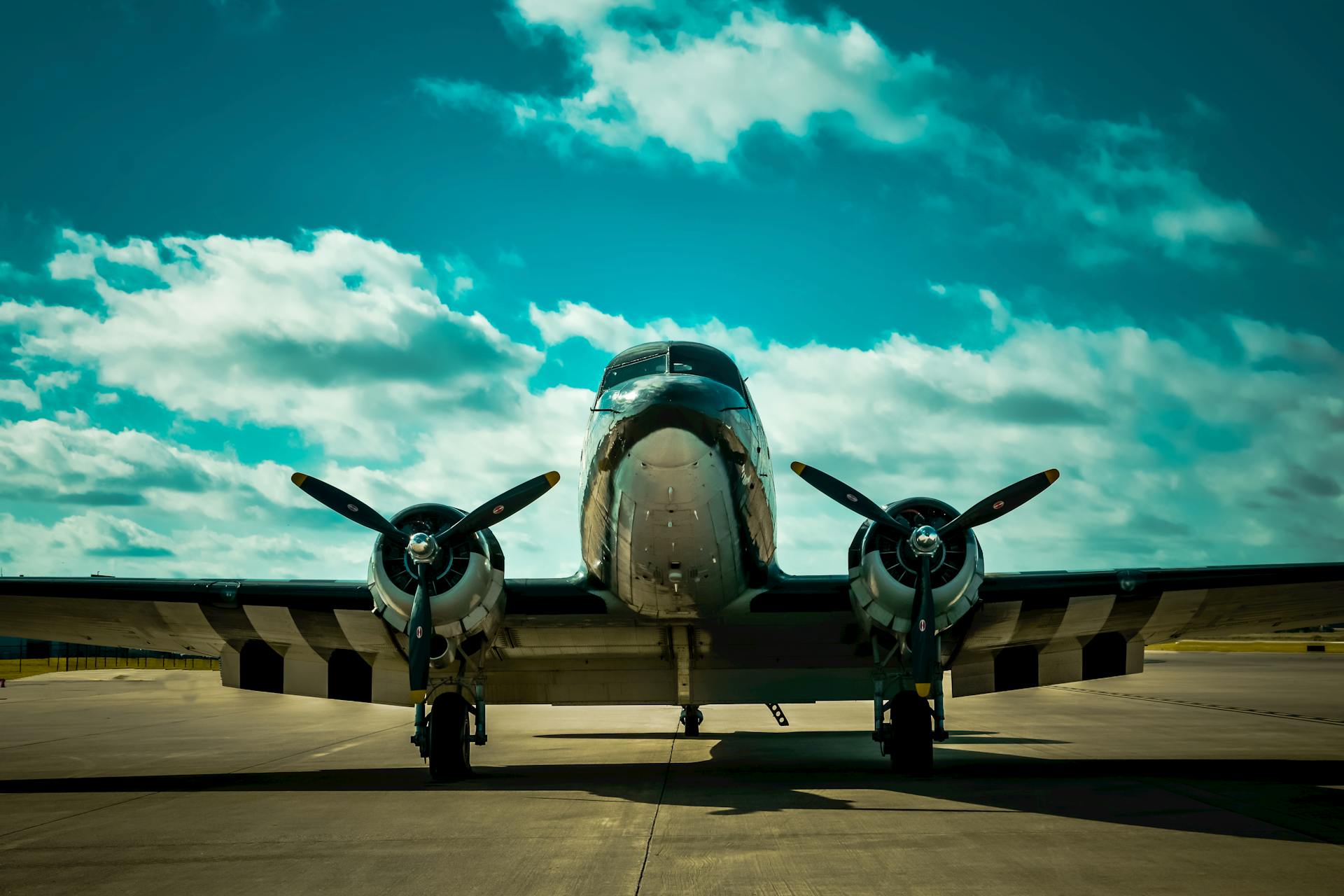
The post-war era saw a significant shift in the role of cargo planes. Many of the planes that had been used during the war were converted for use in civilian aviation.
The Douglas C-47 Skytrain, for example, was a popular cargo plane that had been used extensively during the war. It continued to be used in the post-war period for cargo and passenger transport.
The C-47's versatility and reliability made it an ideal choice for many airlines and cargo companies. It was used to transport everything from mail to cargo to passengers.
The Boeing C-54 Skymaster was another cargo plane that had been used during the war. It was a larger plane than the C-47 and was used for heavier cargo and passenger transport.
The C-54 was also used for humanitarian missions, such as delivering food and supplies to areas in need.
A fresh viewpoint: Cargo Planes Used in Vietnam
Frequently Asked Questions
What is the difference between C-54 and C-47?
The main difference between the C-54 and C-47 is the C-54 has a greater payload capacity and longer range, with some variants reaching up to 1,500 statute miles farther than the C-47. This made the C-54 a more efficient and capable aircraft for military transport missions.
What was the largest cargo plane of ww2?
The largest land-based cargo aircraft of World War II was the Me 323, a powered variant of the Me 321 glider. It was powered by six 895 kW (1,200 hp) engines.
Sources
- https://www.amcmuseum.org/history/world-war-ii-transport-and-troop-carrier/
- https://www.britannica.com/technology/C-47
- https://en.wikipedia.org/wiki/Curtiss_C-46_Commando
- https://www.nationalww2museum.org/war/articles/douglas-c-47-skytrain
- https://amcmuseum.org/history/air-transport-command-airlift-during-wwii/
Featured Images: pexels.com
